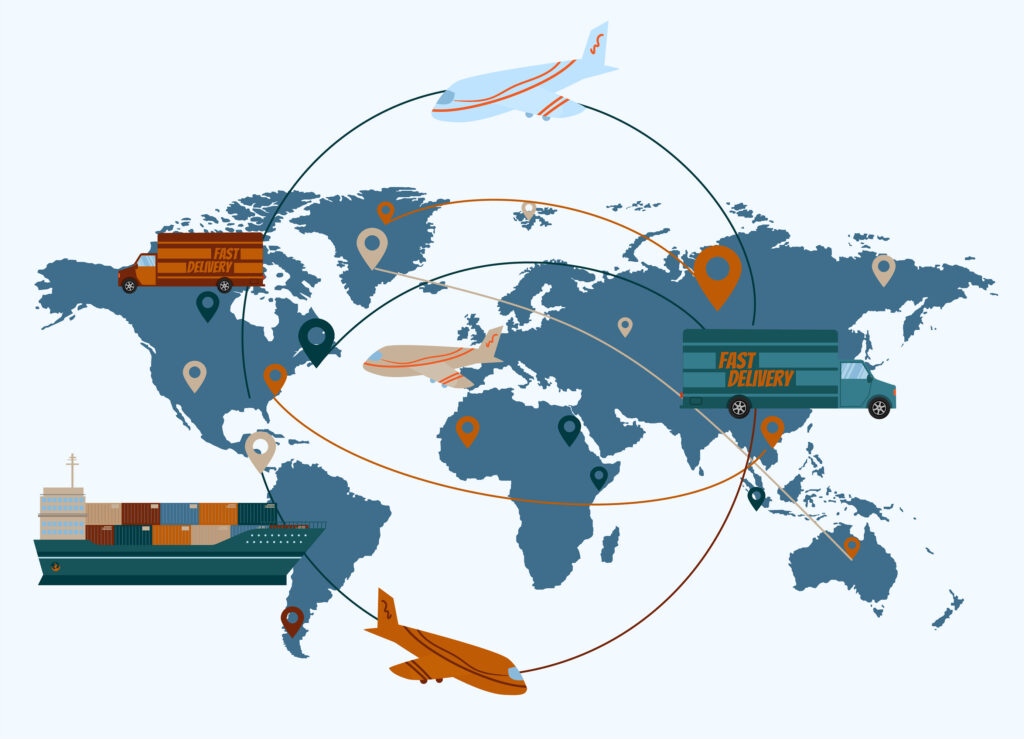International trade in the contemporary world has become the greatest part of economic growth and development. Exporting forms its core because it helps business people increase their markets and source diversification. It contributes towards the economy of the whole world. For new concept people, exports and international trade might seem pretty tough to understand. This guide gives an overview of exporting, explores the benefits, and shows what it’s all about: the process and issues involved with going international.
What is Exporting?
Exporting is the transfer or movement of products or services produced in one country to other countries. Exporting gives a product to the buyer in another country, this results in the movement and exchange of goods, finances, and culture of those two countries. Exporting becomes a large portion of worldwide trade and is also among the largest ways a firm expands its business abroad.
Global trade, therefore, is export based, allowing the countries to specialize in goods and services that may not be readily available in another region within the country. Specialization increases the efficiency of producing goods and, therefore enhances economic relationships between countries as it increases the prosperity of the trading partners.
Advantages of Exporting for Business
- Higher Market Penetration and Revenue – Exporting would give the company access to consumers beyond their domestic markets, thus giving them an infinitely larger potential audience. The diversification of streams of revenues helps reduce the risks that depend entirely on domestic economic cycles and makes the business much more stable and growth capable.
- Risk Diversification – In trying to avoid the impacts of adverse local economic slowdowns or seasonal fluctuations in demand, exporters can explore several markets. The exposure of an enterprise to a number of regions increases the chances that it will withstand changes in consumer preferences or unexpected disruption.
- Increased Competition – While companies are generally forced to enhance their quality, productivity, and creativity when confronted with international markets, there may be increased competitiveness that culminates into better goods and services. This ultimately benefits the home market also.
- Economies of scale occur as higher production volumes lead to lower average cost per unit of output. Global expansion into other countries makes large-scale production possible for companies, meaning operations will be cheaper and can lead to profits arising.
- Global presence is believed to have a positive effect on a company’s visibility and its associated credibility. People, nowadays, consider those companies credible that operate worldwide as their products would likely symbolize reliability, quality, and innovation. Exporting also helps create a global image, making the identity of a brand strong in the global market.
Understanding the Types of exports –
- Direct Exports – This includes the direct selling of a product to the final consumers or distributors in the international market. Although this enables the exporting business to gain greater control over price, distribution, and customer relationship, it requires more management effort and familiarity with the target market.
- Indirect Exports – In indirect exporting, the firm sells to an intermediary, such as a trading company or export management company, which handles foreign sales. This is the less resource-intensive method; therefore, it is most appropriate for businesses that are just starting to export but may have less control over the distribution and branding.
- Joint Ventures and Partnerships – Businesses can also venture into foreign markets by engaging in joint ventures or partnerships with local companies. This model allows the exporter to leverage local expertise, understand the market better, and share both profits and risks with a local partner.
Challenges and Risks in exporting –
- Cultural and Language Barriers – In foreign countries, cultural and language differences affect communication, marketing, and customer relations. The knowledge of other cultures’ nuances and multilingual staff help fill the gaps.
- Currency fluctuations also present a challenge to profitability. The margins cannot be fixed due to variations in margins from fluctuations. A business can hedge currency fluctuations or enter into a contract in a stable currency such as the U.S. dollar.
- Trade Barriers and Tariffs – Some countries impose tariffs, have quotas, or even other limits on imports for supporting home-based industries. Knowing the changes in the treaties of trade, the changes in tariffs, and regulatory laws will keep the exporter ahead of these barriers in trade.
- Legal and Regulatory Compliance – Every market has regulations and standards to be met. Firms must track all such changes in regulations, labelling, and quality control rules not to invite penalties and help smooth and efficient transactions to occur.
- Intellectual Property Protection – In some places, protection of intellectual property rights is not so easy. Companies must register patents and trademarks in foreign markets in advance so as to be protected over their intellectual property.
Conclusion –
International trade, as a fundamental act of commerce, offers the greatest potential for growth to businesses, as they can now reach a larger audience of consumers, diversify income streams, and cement a global brand reputation. While exporting involves the management of a complex and dynamic process built around regulatory compliance, cultural barriers, and logistical issues, the rewards exist in considerable excess over the risks. Armed with research, networking with suppliers, and a quality assurance focus, a firm can see itself based on its exporting course.
For Quest Exports, a company that has made a priority of assisting clients on this road, the aim is to make it smooth, productive, and highly profitable. With a growing legion of businesses that target foreign markets, their knowledge of the macroscale of exporting and global trade is the very first step toward realizing the huge potential beyond borders.

